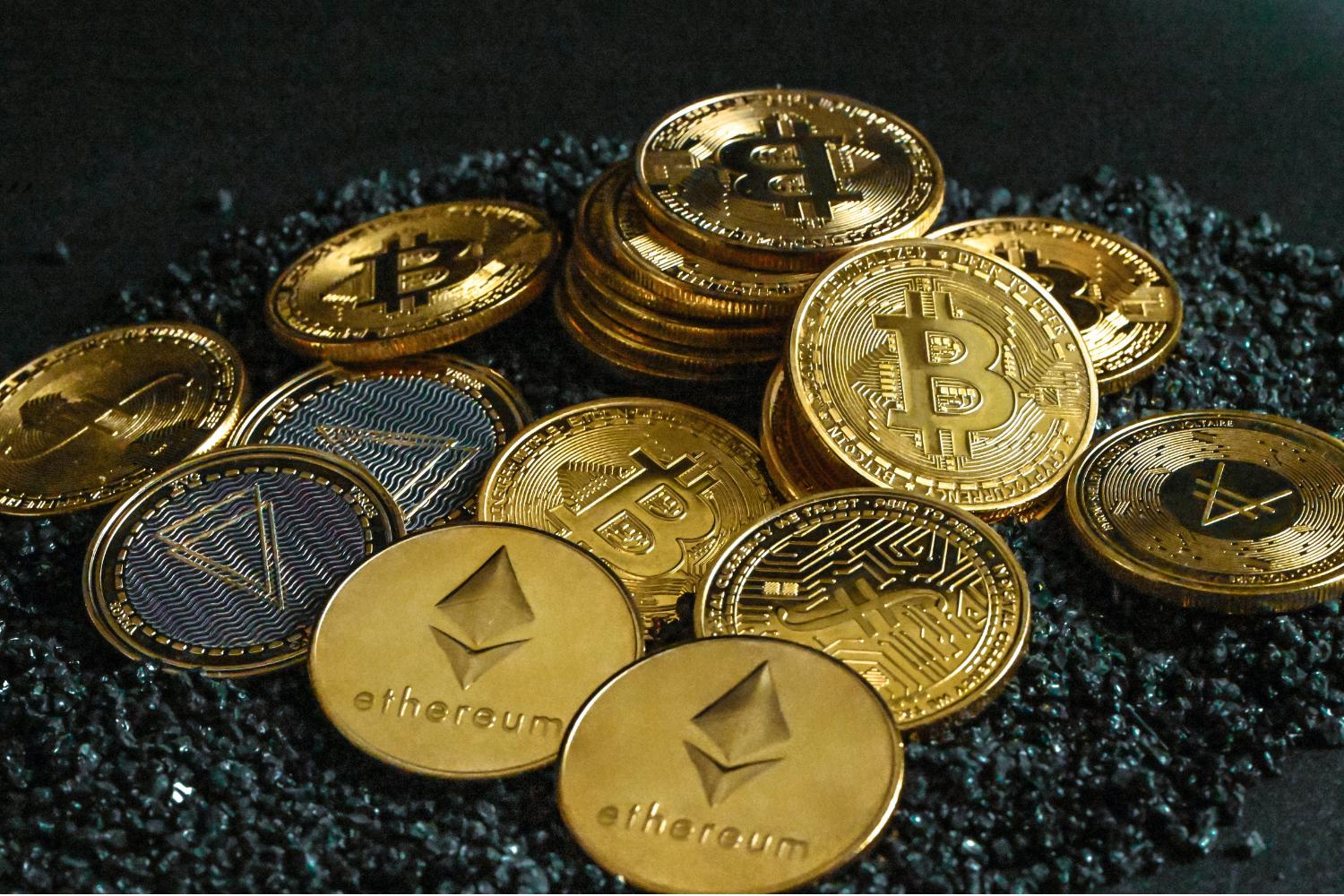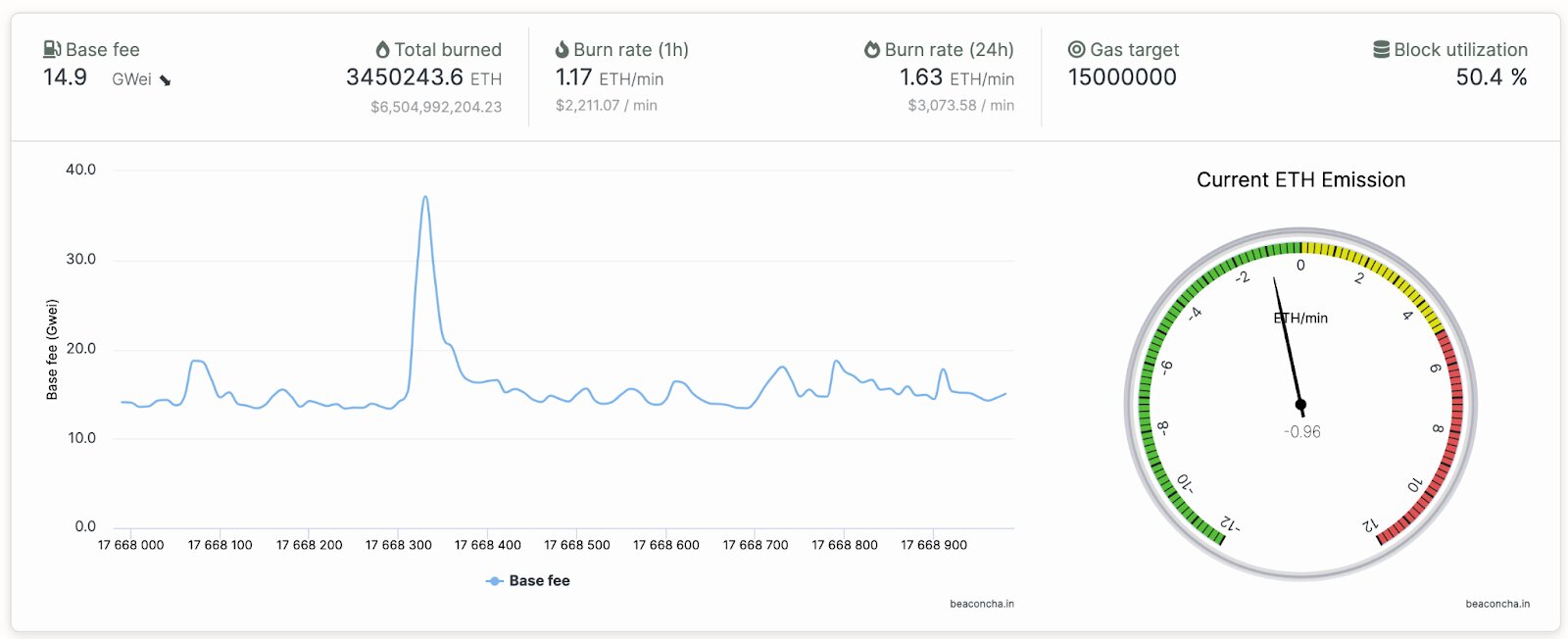Introduction
Cryptocurrency has become a buzzword in recent years, captivating the attention of investors, tech enthusiasts, and financial experts. The allure of decentralized digital currencies and the potential for substantial returns have resulted in the emergence of numerous cryptocurrencies in the market. But just how many crypto coins are there? In this article, we’ll explore the vast landscape of cryptocurrency and delve into the different types of coins that exist.
Cryptocurrency, often referred to as digital currency or virtual currency, operates on the principles of cryptography and blockchain technology. It offers a decentralized system that enables secure and transparent transactions without the need for intermediaries like banks. This innovative concept has disrupted the traditional financial landscape, empowering individuals to take control of their financial transactions.
A cryptocurrency coin is a specific type of digital currency that operates independently of any central authority. It serves as a medium of exchange within a particular blockchain network. Each coin is unique and possesses its own set of features and functionalities. While some coins like Bitcoin are created to be used as a digital currency, others serve a specific purpose within their respective networks.
The number of coins in the crypto market is constantly evolving. At the time of writing, there are thousands of different coins available. Bitcoin, the first and most well-known cryptocurrency, is undoubtedly the leader in terms of market capitalization and adoption. However, it is not the only player in the market. Numerous alternative coins, or altcoins, have emerged to offer different solutions and cater to specific niches.
Stablecoins have also gained prominence in recent years. These coins are designed to have a stable value, usually pegged to a fiat currency like the US dollar. They offer stability amid the volatility of other cryptocurrencies and are often used for trading purposes or as a hedge against market fluctuations.
Understanding Cryptocurrency
To truly grasp the significance of the multitude of crypto coins available today, it’s important to understand the underlying principles of cryptocurrency. Cryptocurrency is a digital or virtual form of currency that uses cryptographic technology to secure transactions, control the creation of new units, and verify the transfer of assets. It is decentralized, meaning it operates on a network of computers rather than being controlled by a single central authority, such as a bank or government.
One of the fundamental features of cryptocurrency is its use of blockchain technology. A blockchain is a decentralized ledger that records all transactions across a network of computers, known as nodes. Each transaction is verified and added to a “block” of data, which is then attached to the previous block, creating a chain of interconnected blocks. This ensures the transparency and immutability of the transaction history, making it nearly impossible to alter or manipulate.
Another key aspect of cryptocurrency is its pseudonymous nature. While the transactions on a blockchain are visible to all participants, the identities of the individuals involved are often represented by unique addresses or cryptographic keys. This provides a certain level of privacy and security, as personal information is not directly linked to the transactions.
Cryptocurrencies are created through a process known as mining, which involves using powerful computers to solve complex mathematical problems. This process secures the network and validates transactions. As a reward for their efforts, miners are often given newly created coins or transaction fees.
In addition to being a medium of exchange, cryptocurrencies can also serve various purposes within their respective blockchain ecosystems. Some coins are designed to enable smart contracts, which are self-executing contracts with predefined conditions and automatic enforcement. Others may focus on providing privacy features or facilitating cross-border transactions at faster speeds and lower costs.
It’s important to note that the value of cryptocurrencies can be highly volatile, with prices subject to rapid fluctuations. This volatility, combined with the decentralized and unregulated nature of the market, presents both opportunities and risks for investors and users.
What Is a Cryptocurrency Coin?
A cryptocurrency coin, also known simply as a coin, is a digital form of currency that operates independently of any central authority. It functions as a decentralized medium of exchange within a specific blockchain network. Each coin represents a unit of value and is stored in a digital wallet, which can be accessed and managed by the owner.
Unlike traditional fiat currencies, which are issued and regulated by governments, cryptocurrency coins are created through a process called mining or minting. Mining involves solving complex mathematical problems using powerful computers, which helps secure the network and validate transactions. As a reward for their mining efforts, individuals are often given newly created coins or transaction fees.
Each cryptocurrency coin has its own unique set of features, properties, and use cases. Bitcoin, the first and most well-known cryptocurrency, was designed as a decentralized digital currency that could be used for peer-to-peer transactions. It aims to provide an alternative to traditional financial systems and enable individuals to have full control over their money.
However, not all cryptocurrency coins are intended to be used as a medium of exchange. Some coins serve specific functions within their respective blockchain networks. For example, Ethereum introduced the concept of smart contracts, which are self-executing contracts with predefined conditions and automatic enforcement. The native coin of the Ethereum network, Ether (ETH), is used to fuel these smart contracts and pay for transaction fees on the platform.
Other coins may focus on offering increased privacy and anonymity, facilitating faster and cheaper cross-border transactions, or providing solutions for specific industries or sectors. The diversity of cryptocurrency coins allows for innovation and experimentation in various areas, providing alternative solutions to traditional systems.
It’s important to note that not all digital assets are considered cryptocurrency coins. Tokens, for example, are another form of digital assets that can be created and utilized on existing blockchain networks. While coins typically have their own dedicated blockchain, tokens rely on an existing blockchain infrastructure, such as Ethereum, to operate. Tokens can represent ownership in a company, represent a specific asset or right, or serve as a utility within a particular platform.
As the cryptocurrency market continues to evolve, new coins with unique features and use cases are constantly being introduced. This diversity offers individuals and businesses a wide range of options to explore and leverage the benefits of the digital currency revolution.
How Many Coins Are There in the Crypto Market?
The number of coins in the crypto market is constantly changing as new projects are introduced and existing ones evolve. At the time of writing, there are thousands of different coins available, each with its own unique features, use cases, and value propositions. These coins can be broadly classified into several categories based on their characteristics and functionalities.
Bitcoin, as the pioneering cryptocurrency, remains the most well-known and dominant coin in the market. It paved the way for the creation of other cryptocurrencies and established itself as a store of value and medium of exchange. With a limited supply of 21 million coins, Bitcoin’s scarcity has contributed to its appeal and value proposition.
Altcoins, which stands for alternative coins, refer to any cryptocurrency other than Bitcoin. This category includes a wide range of coins, such as Ethereum (ETH), Ripple (XRP), Litecoin (LTC), and many more. Altcoins often provide different features or improvements compared to Bitcoin, such as faster transaction speeds, enhanced privacy, or advanced smart contract capabilities.
Stablecoins have also gained immense popularity in recent years. These coins are designed to have a stable value by being pegged to a more stable asset, such as a fiat currency like the US dollar. Stablecoins offer stability in pricing, making them ideal for transactions, hedging against market volatility, or as a base currency for trading on cryptocurrency exchanges.
Additionally, there are utility tokens, which are specific to a particular blockchain platform or project. These tokens have various uses within their ecosystems, such as accessing certain services, participating in voting or governance mechanisms, or even representing ownership in a decentralized application (DApp).
Security tokens are another category of cryptocurrencies that represent ownership of an underlying asset, such as real estate or company shares. These tokens are subject to securities regulations and aim to bridge traditional financial markets with blockchain technology, enabling fractional ownership and increased liquidity.
Non-Fungible Tokens (NFTs) have also gained significant attention in recent years. Unlike traditional cryptocurrencies, NFTs represent unique digital assets or collectibles, such as artwork, music, or virtual real estate. NFTs leverage blockchain technology to establish provenance, authenticity, and ownership of these unique digital items.
Moreover, the concept of tokenized assets has emerged, allowing traditional assets, such as real estate, commodities, or even intellectual property rights, to be represented on blockchain platforms. These tokenized assets enable fractional ownership, increased liquidity, and easier transferability of traditionally illiquid assets.
It’s important to note that the number of coins in the crypto market is not a static figure and can change due to various factors. New coins and tokens continue to be created through initial coin offerings (ICOs), where projects raise funds by distributing their tokens to investors. Additionally, the phenomenon of tokenization has expanded the possibilities for creating digital assets and further diversifying the cryptocurrency market.
Bitcoins
Bitcoin, often referred to as the king of cryptocurrencies, was created in 2009 by an anonymous person or group of people using the pseudonym Satoshi Nakamoto. It marked the birth of decentralized digital currency and laid the foundation for the entire cryptocurrency market as we know it today.
Bitcoin operates on a peer-to-peer network, utilizing blockchain technology to enable secure and transparent transactions without the need for intermediaries. It was designed to be a digital currency that could be used for everyday transactions, offering a faster and more cost-effective alternative to traditional financial systems.
One of the key aspects of Bitcoin is its limited supply. There will only ever be 21 million bitcoins in existence, making it a scarce asset. This limited supply is a significant factor contributing to Bitcoin’s value proposition and has resulted in it being seen as a store of value akin to digital gold.
Bitcoin transactions are recorded on the blockchain, a decentralized ledger that is maintained by a network of computers known as miners. Miners validate transactions and add them to blocks, which are then linked together to form the blockchain. This process ensures the immutability and security of the transaction history.
Bitcoin’s price has experienced significant volatility throughout its existence. Its value is influenced by various factors, including market demand, adoption by businesses and institutions, regulatory developments, macroeconomic conditions, and investor sentiment. Despite these fluctuations, Bitcoin has garnered a considerable amount of mainstream attention and has become a household name in the world of finance.
Bitcoin has also been a driving force behind the development of technological advancements in the cryptocurrency space. Its success paved the way for the creation of numerous altcoins, each with its own unique features and use cases. It has also inspired the development of second-layer solutions, such as the Lightning Network, which aims to enhance Bitcoin’s scalability and enable faster and cheaper transactions.
Today, Bitcoin is widely accepted as a form of payment by businesses around the world, and it has gained recognition as a legitimate asset class by institutional investors. Its decentralized nature and the ability to store and transfer wealth outside of traditional financial systems attract individuals seeking financial sovereignty and protection against inflation.
Overall, Bitcoin remains a prominent and influential cryptocurrency in the market, shaping the future of digital currencies and challenging the status quo of the traditional financial system.
Altcoins
Altcoins, or alternative coins, are cryptocurrencies that emerged after Bitcoin and offer different features, functionalities, and value propositions. While Bitcoin holds the title of the first decentralized digital currency, altcoins have capitalized on its success, addressing limitations and introducing new innovations to cater to specific markets and user needs.
One of the most well-known altcoins is Ethereum (ETH). Launched in 2015, Ethereum introduced the concept of smart contracts, which are self-executing contracts that automatically execute predefined conditions without the need for intermediaries. These smart contracts have revolutionized various industries by enabling the development of decentralized applications (DApps), decentralized finance (DeFi) platforms, and non-fungible tokens (NFTs).
Litecoin (LTC) is another prominent altcoin that was created in 2011 as a “lite” version of Bitcoin. It offers faster block generation times and a different hashing algorithm, making it more efficient for everyday transactions. Litecoin has gained popularity as a payment method due to its fast confirmation times and lower transaction fees compared to Bitcoin.
Ripple (XRP) is a unique altcoin that focuses on providing fast, low-cost, and secure cross-border transactions. Unlike most cryptocurrencies that operate on a decentralized network, Ripple operates on a centralized network, making it a popular choice for banks and financial institutions looking for efficient international remittance solutions.
Other altcoins have emerged with specific use cases, such as privacy-oriented coins like Monero (XMR) and Zcash (ZEC), which offer enhanced privacy features to protect users’ identities and transaction data.
Furthermore, altcoins often incorporate improvements and advancements in blockchain technology. For example, Cardano (ADA) aims to create a more sustainable and scalable blockchain by utilizing a proof-of-stake consensus mechanism. Binance Coin (BNB) operates on the Binance exchange platform and enables users to access discounted trading fees, participate in token sales, and more.
The altcoin market is diverse and continually evolving, with new projects and coins being introduced regularly. Some of these projects focus on solving real-world problems, while others explore niche markets or introduce cutting-edge technologies, such as interoperability between different blockchains or blockchain-based internet infrastructure.
Investing in altcoins carries its own set of risks, as the success of these projects relies on factors like adoption, regulatory compliance, and market demand. It’s essential for investors to conduct thorough research, understand the fundamentals of each project, and assess their long-term viability before considering investment opportunities.
Overall, altcoins contribute to the vibrant and dynamic nature of the cryptocurrency market, offering a diverse range of options and opening up new possibilities for innovation and disruption in various sectors.
Stablecoins
Stablecoins have emerged as a unique category of cryptocurrencies designed to address the volatility associated with other digital assets like Bitcoin and Ethereum. These coins are pegged to a more stable asset, such as a fiat currency like the US dollar or a commodity like gold, aiming to provide a reliable store of value within the cryptocurrency ecosystem.
The primary goal of stablecoins is to maintain a stable price, unlike other cryptocurrencies that are subject to significant price fluctuations. This stability makes stablecoins appealing for various use cases, such as everyday transactions, remittances, and as a safe haven during market volatility.
There are different types of stablecoins, each utilizing various mechanisms to maintain their stability. The most common types include:
- Fiat-Collateralized Stablecoins: These stablecoins are backed by reserve assets held by the issuing entity, typically in the form of fiat currency deposits. The idea is that for every stablecoin issued, there is an equivalent amount of fiat currency held in a bank account, providing stability and confidence in the pegged value.
- Crypto-Collateralized Stablecoins: These stablecoins are backed by other cryptocurrencies held as collateral. The value of the collateral ensures the stability of the stablecoin. Smart contracts are typically used to manage the collateralization ratio and maintain stability.
- Algorithmic Stablecoins: These stablecoins employ algorithms and mechanisms to control the coin’s supply and demand in order to maintain a stable price. These algorithms may include mechanisms such as expanding or contracting the money supply based on various factors.
One of the most well-known stablecoins is Tether (USDT), which is pegged to the US dollar on a 1:1 basis. Tether maintains its stability through the use of fiat currency reserves held in designated bank accounts. Similar stablecoins include USD Coin (USDC) and TrueUSD (TUSD), providing users with alternatives to transact and store value in a more stable form.
Stablecoins have gained significant popularity, particularly in the cryptocurrency trading space. Traders often utilize stablecoins as a hedge against market volatility, allowing them to move quickly in and out of cryptocurrency positions without incurring fiat conversion fees or potential price fluctuations.
Moreover, stablecoins offer a way for individuals in countries with unstable or restricted access to fiat currencies to store and transfer value. They provide a bridge between traditional financial systems and the world of cryptocurrencies, enabling easier entry and exit points for users.
Regulatory considerations play an essential role in the development and adoption of stablecoins, as they often aim to bridge the gap between the traditional financial system and the world of cryptocurrencies. Ensuring compliance with relevant regulations, such as anti-money laundering (AML) and know-your-customer (KYC) requirements, is crucial to gain trust and legitimacy.
Stablecoins continue to play a significant role in the cryptocurrency ecosystem, offering stability, liquidity, and a gateway for individuals and businesses to seamlessly transact and store value within the digital asset space.
Utility Tokens
Utility tokens are a type of cryptocurrency that serve a specific purpose within a particular blockchain platform or ecosystem. These tokens are designed to be used for accessing and utilizing specific products, services, or functionalities provided by the blockchain network.
Unlike cryptocurrencies that primarily function as a medium of exchange or store of value, utility tokens derive their value from the services or utilities they enable. They represent a unit of value that can be exchanged for a specific product, access to a particular feature, or participation in a network’s ecosystem.
Utility tokens are often created during initial coin offerings (ICOs) or token generation events (TGEs) to raise funds for blockchain projects. These tokens are typically pre-sold to investors, who can later use them within the project’s ecosystem. The value of utility tokens may appreciate based on the success and adoption of the project, as increased demand for the services or products provided by the network can drive up the token’s value.
An example of a utility token is the Basic Attention Token (BAT), which was created by the Brave browser project. BAT is used as a form of payment within the Brave ecosystem, enabling users to reward content creators and advertisers for their attention. By using BAT, users can access premium content, remove ads, or support their favorite creators.
Utility tokens can also play a role in governance within a blockchain network. Some projects allocate voting rights to token holders, allowing them to participate in decision-making processes. These tokens enable community members to have a say in the network’s development, upgrades, or protocol changes.
It’s important to note that utility tokens do not represent ownership in a company, nor do they entitle holders to a share of the project’s profits. Instead, they provide access to the project’s resources and services, creating a symbiotic relationship between users and the network.
Regulatory considerations may vary for utility tokens, as they may fall under securities regulations depending on factors such as the nature of the token, the participation of investors, and the expectations of profit. Compliance with relevant securities laws and the distinction between utility and security tokens are important to ensure legal compliance and investor protection.
Utility tokens play a vital role in fostering innovation and driving the adoption of blockchain networks and platforms. They incentivize participation, enable access to services, and align the interests of users and developers within the decentralized ecosystem.
Security Tokens
Security tokens are a type of cryptocurrency that represent ownership of an underlying asset, such as stocks, bonds, real estate, or other financial instruments. Unlike utility tokens that provide access to specific services or products within a blockchain ecosystem, security tokens are subject to securities regulations and offer investors a stake in the underlying asset’s value and potential profits.
Security tokens are designed to bring the benefits of blockchain technology, such as increased transparency, liquidity, and programmability, to traditional financial markets. By tokenizing assets, security tokens aim to facilitate fractional ownership, enhance market efficiency, and broaden investment opportunities.
The issuance and trading of security tokens typically comply with securities laws in the jurisdictions in which they are offered. These tokens are considered investment contracts and thus subject to regulatory scrutiny to protect investors. Regulations vary across jurisdictions, but may include requirements such as registration, accreditation of investors, and ongoing reporting.
One significant advantage of security tokens is the potential for increased liquidity. Unlike traditional ownership of assets, which may be illiquid and require time-consuming processes to transfer or sell, security tokens can be traded 24/7 on various cryptocurrency exchanges. This opens up new opportunities for smaller investors to access traditionally exclusive assets and enables a more efficient market.
Real estate is one area where security tokens are gaining traction. Tokenizing properties allows for fractional ownership, reducing barriers to entry and enabling greater diversification. It also provides increased liquidity, as investors can buy and sell fractions of properties without the need for intermediaries like brokers or lengthy settlement processes.
Security tokens can also enhance corporate governance by providing mechanisms for voting or profit-sharing rights. Token holders can participate in decision-making processes or receive dividends based on the underlying asset’s performance.
It’s important to note that while security tokens offer benefits and new opportunities, they come with certain legal and regulatory considerations. Issuers and investors need to navigate securities regulations, including compliance with anti-money laundering (AML) and know-your-customer (KYC) requirements. Engaging legal and regulatory experts to ensure compliance is crucial to avoid legal repercussions and protect the interests of all parties involved.
Security tokens are an exciting development that has the potential to transform traditional financial markets. By tokenizing assets and leveraging blockchain technology, security tokens offer increased accessibility, liquidity, and transparency while complying with relevant regulations.
Non-Fungible Tokens (NFTs)
Non-Fungible Tokens (NFTs) have emerged as a unique type of cryptocurrency that represents ownership of a distinct and indivisible digital asset. Unlike cryptocurrencies such as Bitcoin or Ether, which are fungible and can be exchanged on a one-to-one basis, each NFT is unique and cannot be exchanged on a like-for-like basis.
NFTs leverage blockchain technology to establish and verify the ownership, authenticity, and provenance of digital assets such as art, collectibles, virtual real estate, or even virtual identities. Each NFT carries specific metadata that distinguishes it from other tokens, ensuring its uniqueness and scarcity, making it ideal for selling and trading digital assets in a secure and transparent manner.
One of the core advantages of NFTs is their ability to solve the problem of digital ownership and scarcity. With traditional digital files, such as images or videos, anyone can make copies or distribute them without the creator’s permission or attribution. NFTs enable artists and creators to mint and sell their digital creations as unique tokens, providing a way to establish ownership and monetize their work.
The market for NFTs has exploded in recent years, with artists, musicians, athletes, and even brands embracing this new technology. NFT marketplaces allow creators to sell their digital assets directly to collectors, facilitating a direct connection and supporting artists in monetizing their work without intermediaries. The advent of NFTs has also opened up new avenues for creators to explore innovative business models, such as royalties or unlocking additional content based on ownership.
NFTs have extended into the world of gaming, enabling the ownership and transfer of in-game assets and virtual items. Players can buy, sell, and trade virtual land, unique characters, or rare items within blockchain-based games, providing true ownership and interoperability across different gaming platforms.
However, it’s important to consider the environmental impact of NFTs, particularly those built on energy-intensive blockchain networks. The carbon footprint associated with the creation and trading of NFTs has raised concerns within the community, prompting the exploration of more sustainable alternatives and solutions.
Despite the ongoing debates and challenges, NFTs have sparked a significant paradigm shift in the digital art and collectibles world. They offer artists and creators new opportunities for monetization and engagement with fans, while collectors enjoy the benefits of true ownership and scarcity in the digital realm. As the technology continues to evolve, NFTs have the potential to reshape multiple industries, driving innovation and transforming digital asset ownership as we know it.
Tokenized Assets
Tokenized assets refer to the process of representing traditional assets, such as real estate, commodities, or intellectual property rights, as digital tokens on a blockchain. By digitizing these assets, tokenization brings increased liquidity, fractional ownership, and enhanced accessibility to traditionally illiquid assets.
One of the main benefits of tokenized assets is the opportunity for fractional ownership. Traditional investments often require large sums of money, making it difficult for smaller investors to gain exposure to certain assets. Tokenization allows for the division of an asset into smaller units, enabling investors to purchase fractions of the asset. This opens up investment opportunities for a broader range of individuals and provides increased liquidity as these tokenized assets can be easily traded on various cryptocurrency exchanges.
Real estate is a prime example of an asset class that benefits from tokenization. Property ownership has traditionally been restricted to those with significant capital, limiting the investment potential for smaller investors. Tokenizing real estate assets allows for the fractional ownership of properties, making it easier for individuals to invest in real estate and diversify their portfolios.
Additionally, tokenization can streamline the process of buying, selling, and transferring ownership of assets. By representing assets as tokens on a blockchain, the cumbersome and time-consuming manual processes associated with traditional asset transfers can be replaced by efficient and transparent smart contract executions.
Tokenized assets also offer increased liquidity compared to their traditional counterparts. In traditional markets, selling an illiquid asset like real estate or artwork can take time and involve significant costs. Tokenization allows these traditionally illiquid assets to be traded 24/7 on various cryptocurrency exchanges, enabling investors to buy and sell their digital representations quickly, enhancing market efficiency.
While tokenized assets offer numerous advantages, they also come with certain considerations. Regulatory compliance is crucial, as tokenized assets may fall under existing securities regulations. Engaging legal and regulatory experts to navigate the legal framework is necessary to ensure adherence to relevant laws and to protect investor interests.
Tokenized assets have the potential to democratize access to investment opportunities, increase market efficiency, and unlock liquidity in traditionally illiquid markets. As blockchain technology and tokenization continue to evolve, we can expect to see increased adoption of digital representations of assets across various industries.
Factors Influencing the Number of Cryptocurrency Coins
The number of cryptocurrency coins in the market is influenced by several factors, including technological innovation, market demand, regulatory environment, and investor sentiment. These factors shape the landscape of cryptocurrencies and contribute to the continuous growth and development of the market.
Technological innovation plays a significant role in the creation of new cryptocurrency coins. Advancements in blockchain technology, smart contracts, and decentralized applications have paved the way for the emergence of various coins with unique features and functionalities. Developers are constantly exploring new ways to solve real-world problems, resulting in the creation of coins tailored to specific industries or use cases.
Market demand is another important factor driving the number of coins. As cryptocurrencies gain traction and adoption, the demand for specialized coins that cater to specific needs or niches increases. Investors and users seek alternative options to Bitcoin, leading to the proliferation of altcoins that offer different features or improvements in terms of speed, privacy, scalability, or governance.
The regulatory environment also plays a crucial role in the number of cryptocurrency coins available in the market. Different jurisdictions have varying stances on cryptocurrencies, with some embracing innovation while others impose strict regulations. Legal clarity and regulatory frameworks that support the growth of the cryptocurrency industry can foster the creation of new coins, while regulatory uncertainty may hinder innovation and limit the number of new projects.
Investor sentiment and market trends influence the creation of new coins as well. During periods of bullish market sentiment, there is often an influx of new projects through initial coin offerings (ICOs) or other means of token distribution. Conversely, bearish market conditions may deter new projects from entering the market, resulting in a slowdown in the creation of new coins.
The interplay between these factors creates a dynamic environment where the number of cryptocurrency coins continually changes. Projects that offer novel solutions or cater to specific industry needs tend to gain traction and attract investor interest, contributing to the expansion of the cryptocurrency market. Conversely, projects that fail to address market demand or adhere to regulatory requirements may struggle to gain adoption, leading to a decline or disappearance of certain coins.
It’s important to note that the number of coins in the market does not necessarily correlate with their long-term success or value. Many factors, including strong fundamentals, real-world adoption, and a supportive community, contribute to the success and longevity of a cryptocurrency coin.
As the cryptocurrency market continues to evolve, we can expect to see new coins being introduced, existing projects evolving, and regulations shaping the landscape. The competition and innovation within the market will drive the creation of new coins that offer unique value propositions and contribute to the continued growth and maturation of the cryptocurrency ecosystem.
The Rise of New Coins and Tokens
The cryptocurrency market is dynamic and constantly evolving, with new coins and tokens emerging regularly. The rise of new coins and tokens can be attributed to several factors that shape the landscape of digital currencies, including innovation, market demand, and the accessibility of fundraising through initial coin offerings (ICOs) or token generation events (TGEs).
Technological innovation plays a significant role in the creation of new coins and tokens. Developers and entrepreneurs are constantly seeking to address limitations and improve upon existing blockchain platforms. This drive for innovation results in the creation of coins with unique features, enhanced scalability, privacy, interoperability, or governance mechanisms. These new coins offer alternatives and solutions to the challenges faced by earlier generations of cryptocurrencies.
Market demand is another driving force behind the rise of new coins and tokens. As more individuals and businesses become interested in cryptocurrencies, the demand for specialized coins catering to specific sectors or use cases increases. For example, with the rising popularity of decentralized finance (DeFi), we have seen the emergence of coins focused on lending, trading, or yield farming within decentralized financial protocols. Similarly, the increased interest in non-fungible tokens (NFTs) has spurred the development of tokens designed for digital art, collectibles, or virtual real estate.
The accessibility of fundraising through ICOs or TGEs has also contributed to the proliferation of new coins and tokens. These methods allow projects to raise capital by distributing their coins or tokens to investors in exchange for funding. While ICOs have faced scrutiny and evolving regulations in some jurisdictions, they have provided a streamlined way for new projects to finance their development and quickly gain a user base. This fundraising method has enabled aspiring entrepreneurs and innovators to bring their ideas to life and introduce new coins and tokens into the market.
The rise of new coins and tokens brings both benefits and challenges. On one hand, it fosters innovation, offering a diverse range of options for investors and users. It encourages competition among cryptocurrencies, spurring advancements and improvements in blockchain technology and use cases. New projects often bring fresh perspectives and novel approaches, pushing the boundaries of what is possible within the cryptocurrency ecosystem.
On the other hand, the rapid proliferation of new coins and tokens requires investors and users to exercise due diligence and caution. Not all projects are created equal, and the crypto market has seen its share of fraudulent or poorly executed ventures. Conducting thorough research, evaluating the project’s team, technology, and roadmap, as well as considering its market fit and long-term viability, are essential steps to navigate the ever-expanding landscape of cryptocurrencies.
Overall, the rise of new coins and tokens is an integral part of the cryptocurrency market’s growth and development. It showcases the industry’s constant innovation and adaptability to meet the evolving needs and demands of the global digital economy. As blockchain technology continues to advance and new challenges arise, we can expect to see a continued influx of new coins and tokens that contribute to the diversification and maturation of the cryptocurrency ecosystem.
The Role of Initial Coin Offerings (ICOs)
Initial Coin Offerings (ICOs) have played a significant role in the growth and development of the cryptocurrency market. An ICO is a fundraising method in which a project issues and sells its own cryptocurrency tokens to investors in exchange for funding. The popularity of ICOs soared with the rise of cryptocurrencies, providing a new way for projects to raise capital and gain widespread adoption.
One of the key advantages of ICOs is their accessibility. Unlike traditional fundraising methods, such as initial public offerings (IPOs) or venture capital financing, ICOs allow anyone with an internet connection and an understanding of cryptocurrencies to participate. This democratization of funding enables a broader range of investors, including retail investors, to support promising blockchain projects and benefit from their success.
ICOs have offered entrepreneurs and innovators a streamlined way to finance their projects and quickly reach the market. By creating and distributing their own tokens, projects can generate capital without the need for traditional intermediaries or regulatory barriers. This has led to an explosion of creativity and innovation within the cryptocurrency ecosystem, as entrepreneurs have been able to bring their ideas to life and introduce new coins and tokens into the market.
Investors participating in ICOs have the opportunity to support innovative projects at an early stage and potentially reap significant returns. If a project succeeds, the value of the tokens acquired during the ICO can increase significantly, allowing investors to profit from their early adoption. However, it’s important to note that ICOs also come with risks, as not all projects succeed or deliver on their promises. Investors must conduct thorough research and due diligence to evaluate the viability, legitimacy, and potential of an ICO project.
Regulatory considerations have come to the forefront in the realm of ICOs. While some jurisdictions have embraced ICOs as a legitimate form of fundraising, others have imposed restrictions or outright bans due to concerns over investor protection and potential fraudulent activities. The regulatory landscape surrounding ICOs remains a complex and evolving issue, with jurisdictions working to establish frameworks to protect investors without stifling innovation.
It’s worth mentioning that ICOs have evolved since their early days, with projects becoming more mindful of legal compliance and adopting best practices. Security token offerings (STOs) have emerged as a regulated alternative to ICOs, offering tokens that represent ownership or share of profits in a company, adhering to securities laws in relevant jurisdictions.
While ICOs have faced criticisms and challenges, they have undeniably had a significant impact on the cryptocurrency market. ICOs have driven innovation, enabled access to capital for aspiring entrepreneurs, and given rise to countless successful projects. They have also reshaped fundraising mechanisms and challenged traditional financing methods, opening up new opportunities for investors and paving the way for the evolution of blockchain technology.
As the regulatory environment continues to evolve and market dynamics shift, the role of ICOs may continue to transform. It is crucial for participants in ICOs to stay informed about the changing landscape and to ensure compliance with relevant regulations to promote investor trust and protect the integrity of the market.
The Impact of Tokenization
Tokenization, the process of creating digital representations of assets on a blockchain, has had a profound impact on various industries and has the potential to revolutionize traditional systems of ownership and value exchange. The adoption of tokenization technology has opened up new possibilities and brought significant benefits across different sectors.
One of the major impacts of tokenization is increased liquidity. By representing traditionally illiquid assets, such as real estate, artwork, or intellectual property, as digital tokens, tokenization enables the fractional ownership and transferability of these assets. This fractional ownership allows for easier trading and broader participation, improving liquidity in markets that were once limited to a select few.
Tokenization also enhances market efficiency by reducing the barriers to entry for investors. Fractional ownership allows individuals with limited capital to diversify their portfolios and gain exposure to previously inaccessible assets. With tokenization, investors can own a portion of valuable assets without the need for large sums of money, democratizing investment opportunities and enabling greater financial inclusion.
Furthermore, tokenization facilitates transparency and security in asset ownership. By utilizing blockchain technology, the immutable nature of transaction records and smart contracts ensures that ownership is easily verifiable and tamper-proof. This eliminates the need for intermediaries and reduces fraudulent activities, resulting in more transparent and secure transactions.
Tokenization introduces significant advantages for the realm of cross-border transactions as well. Traditional methods of transferring ownership or value across borders are often time-consuming, expensive, and burdened by bureaucratic processes. Tokenization allows for near-instantaneous transfers of digital assets, overcoming geographic boundaries and reducing the barriers to global trade and investment.
In addition, tokenization opens up new opportunities for innovative business models and financial instruments. It enables the creation of new derivatives, decentralized exchanges, and peer-to-peer lending platforms. It also fosters the emergence of decentralized finance (DeFi) applications, allowing individuals to access financial services and products without the need for traditional intermediaries.
However, challenges and considerations accompany the adoption of tokenization. Regulations surrounding the tokenization of assets vary across jurisdictions, and compliance with relevant laws is crucial to avoid legal issues. Additionally, tokenization requires robust cybersecurity measures to protect digital assets and prevent hacking or unauthorized access.
Despite these challenges, tokenization has the potential to disrupt and reshape industries such as finance, real estate, art, and intellectual property. The ability to represent value digitally and trade assets seamlessly on a global scale introduces efficiencies and democratizes access to previously exclusive markets. As technology advances and standards for tokenization mature, its impact will continue to transform traditional systems and unlock new opportunities for innovation and financial empowerment.
The Future of Cryptocurrency Coins
The future of cryptocurrency coins holds immense potential for continued growth and innovation. As the technology matures and becomes more widely adopted, we can expect to see significant advancements in various aspects of the cryptocurrency market.
One area of focus for the future of cryptocurrency coins is scalability and transaction throughput. As cryptocurrencies gain mainstream attention and usage increases, the need for faster and more scalable networks becomes crucial. Projects are actively exploring solutions such as layer 2 protocols, sharding, and consensus algorithm improvements to address scalability challenges and allow for mass adoption.
Interoperability between different blockchain networks is another key area that will shape the future of cryptocurrencies. The ability to seamlessly transfer assets and data across different blockchains will foster collaboration, expand use cases, and enable the development of decentralized applications that span multiple networks. Projects are already working on interoperability protocols and bridge solutions to enable this level of connectivity and compatibility among various blockchain platforms.
The advancement of privacy features will also play a significant role in the future of cryptocurrencies. While some cryptocurrencies offer anonymity, there is a growing demand for enhanced privacy and confidentiality in transactions. In response, projects are developing innovative methods such as zero-knowledge proofs, ring signatures, and cryptography-based solutions to provide stronger privacy features and protect user identities.
The integration of cryptocurrencies into everyday life will continue to shape the future of digital coins. We are witnessing increasing acceptance of cryptocurrencies as a means of payment by businesses across various industries. This includes major corporations, online retailers, and even governments exploring the possibility of digital currencies. While challenges such as scalability, regulatory compliance, and user experience remain, the future holds the potential for cryptocurrencies to become a mainstream medium for both online and offline transactions.
Decentralized finance (DeFi) is another area that will continue to have a significant impact on the future of cryptocurrency coins. DeFi protocols are transforming traditional financial systems by offering decentralized lending, borrowing, and trading platforms. As the ecosystem evolves, we can expect to see more innovative DeFi applications emerge, providing access to financial services such as insurance, derivative products, and yield farming, all without the need for intermediaries.
Moreover, the integration of cryptocurrencies with emerging technologies such as artificial intelligence (AI) and the Internet of Things (IoT) holds enormous potential. AI algorithms can analyze transaction patterns, enhance security measures, and provide insights into market trends. Integration with IoT devices enables seamless and secure machine-to-machine transactions that can revolutionize supply chain management, smart cities, and many other industries.
However, it’s important to acknowledge that the future of cryptocurrency coins will also face challenges. Regulatory frameworks will continue to evolve, and industry standards will likely be implemented to ensure consumer protection, prevent fraud, and mitigate money laundering risks. Cryptocurrency projects will need to embrace compliance and work within regulatory boundaries to foster a healthy and sustainable industry.
In summary, the future of cryptocurrency coins looks promising, with ongoing technological advancements, increased adoption, and expanding use cases. Scalability, interoperability, privacy features, integration into everyday life, DeFi, and emerging technology collaborations will be pivotal in shaping the evolving landscape of digital currencies. As the ecosystem matures, cryptocurrencies have the potential to revolutionize financial systems, democratize access to services, and empower individuals worldwide.
Conclusion
Cryptocurrency coins have transformed the landscape of finance and technology, offering decentralized and secure digital currencies that empower individuals and businesses worldwide. From the pioneering Bitcoin to the vast array of altcoins, stablecoins, utility tokens, security tokens, non-fungible tokens (NFTs), and tokenized assets, the cryptocurrency market has evolved rapidly, driven by technological innovation, market demand, and evolving regulatory frameworks.
The future of cryptocurrency coins is promising, with continued advancements in scalability, interoperability, privacy features, and integration into various aspects of everyday life. As blockchain technology matures and becomes more widely adopted, cryptocurrencies have the potential to revolutionize financial systems, drive innovation, and provide greater accessibility and financial inclusion.
However, challenges remain. Regulations and legal considerations continue to evolve, industry standards are being established, and investor protection remains paramount. Navigating these challenges and ensuring compliance will be crucial for sustainable growth and market viability.
The diverse and ever-growing cryptocurrency market offers opportunities and risks for investors and users alike. Thorough research, due diligence, and understanding of the technology, projects, and market dynamics are essential for making informed decisions and mitigating risks.
Overall, the world of cryptocurrency coins is continuously evolving, shaping the future of finance, technology, and innovation. It is an exciting and transformative journey that will continue to redefine how we exchange value, transact, and participate in the global economy.

























